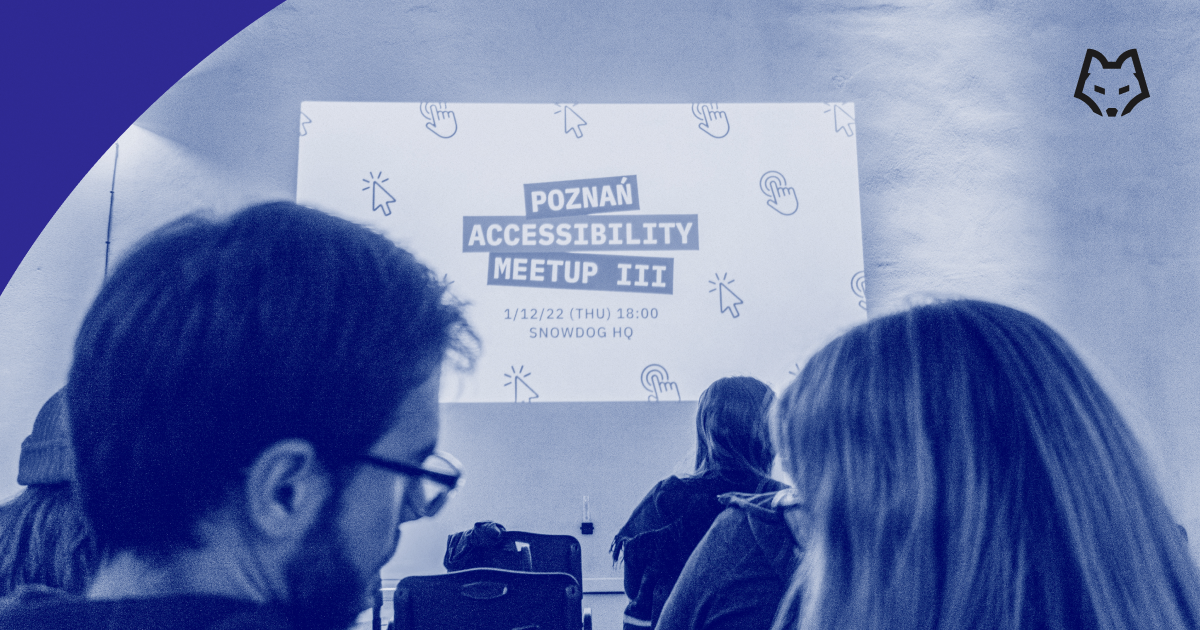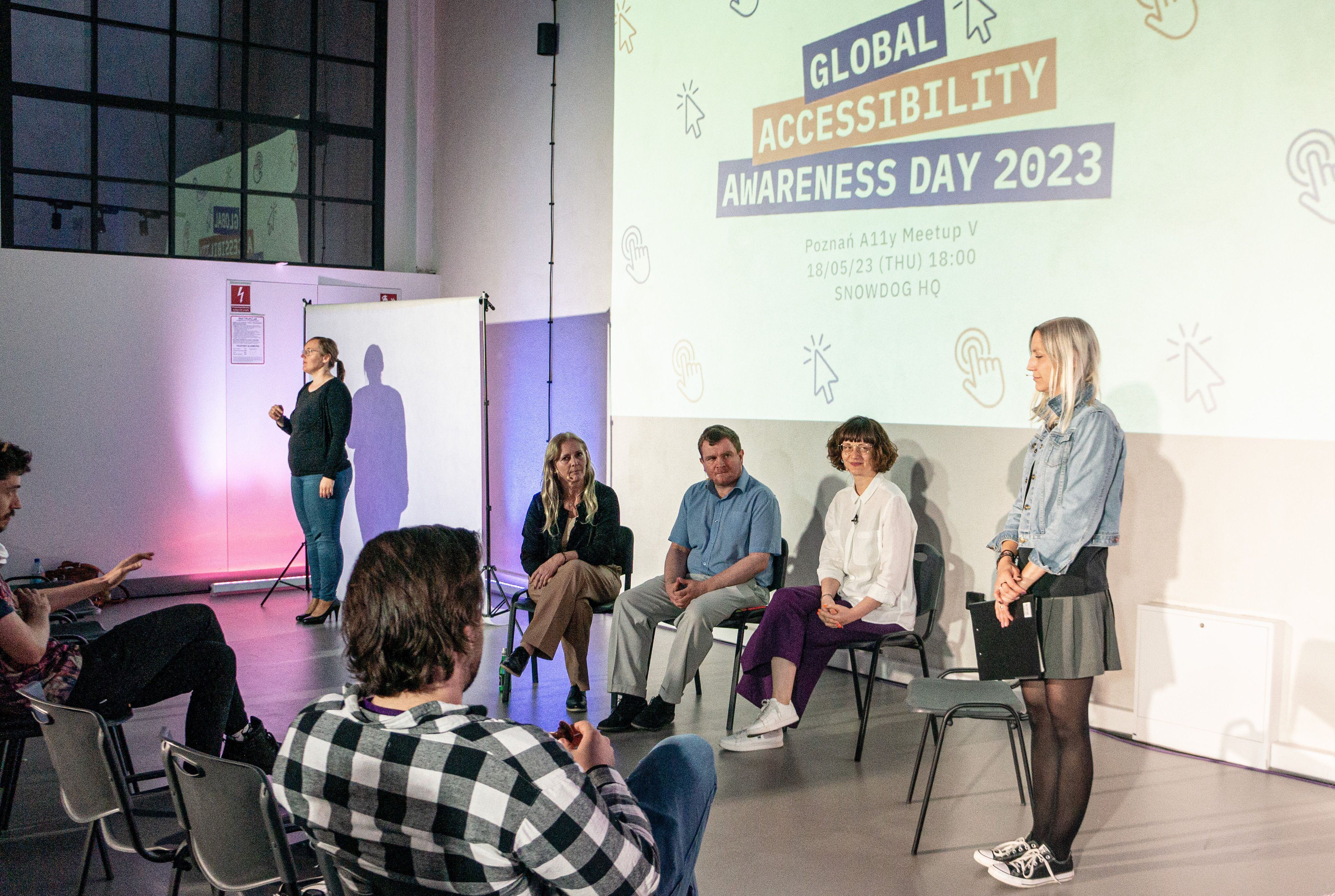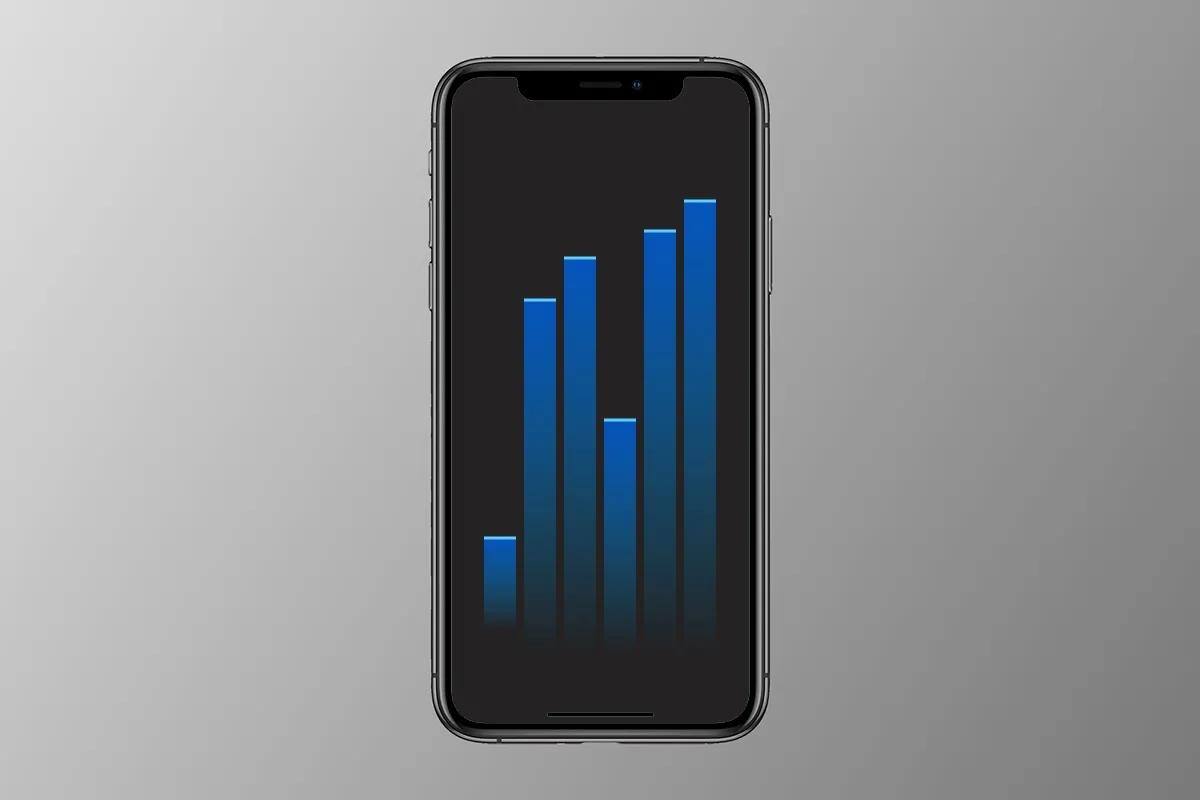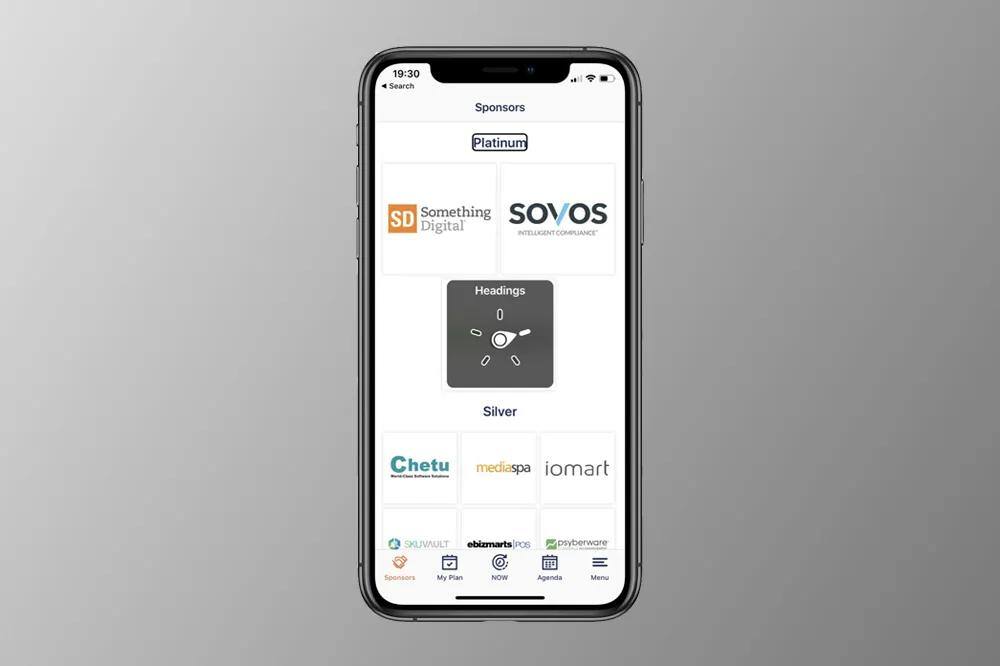
Once again, on December 1st, 2022, we gathered at the Snowdog HQ to delve into the topic of accessibility. Our primary focus this time was to gain deeper insights into the experiences of visually impaired individuals. With two engaging speakers and an enthusiastic audience, our meetup proved to be a platform for thought-provoking discussions and the exchange of valuable knowledge. Curious to know what we discovered? Read on!
Lecture by Grzegorz Jakubowski
A few minutes after 6 P.M. Ania Karoń, our Senior Frontend Developer and Accessibility Specialist started the meetup with a short introduction of our lecturers and the topics.
First speaker? Grzegorz Jakubowski introduced us to the origins and rules of blind football.
Blind Football - A brief history
The sport started in the 1920s in Spain. It was developed in Brazil, with the first league being played in that country. Since then, that South American country has become the capital of the sport. The first team in Poland was Wroclaw Sprint. For a long time, there were only 2 teams in our country. The one in Wrocław and the other one in Kraków. Additionally, for a short period of time, we had a team in Chorzów as well.
One of the most prominent proponents of the sport is Marcin Ryszka, a Paralympian, 3-times World Champion in swimming, and sports commentator. The sport is still growing, and its popularity is raising in countries like Poland. This year only there 3 teams were founded: in Zabrze, one in Bielsko-Biała, and one in Poznań — Warta Poznań Blind Football. With that many teams, it’s very likely that the first Polish Blind Football League will be started. Unfortunately, the costs of this type of football are much higher, and it is not supported by the government, so the development can only be fueled by private investors and charities.

Is it any different from regular football?
Yes, there are some differences. The game is 50 minutes long (2x25 min). The pitch is a bit smaller than an “Orlik” (smaller, artificial grass field, typically used for 5-a-side games). There are only 4 players in the field, so there aren’t many variations of the formations. It usually is two players in the front and two in the back. The ball has a rattle inside, so the players can hear it and it’s smaller and heavier than the standard one. The sport is for tough people only, both men and women can play in the same team, but be aware! Broken noses and concussions often occur, when players hit each other with their heads. Players wear special goggles or eye bands that give some protection when they strike their heads.
Voy, voy!
Players shout that Spanish word, “I go”, for safety reasons. Thanks to the fact that they are speaking, they can localize other players better and avoid collisions. The only person that is playing the sport and is not visually impaired is the goalkeeper. He can’t move outside his box which is a rectangle with dimensions 4 m and 2m. If he steps on the line it’s a penalty. He also plays the role of coordinator. Especially in the defence part of the game. On the other side of the field, behind the rival’s goal, there’s a guide, whose job is to tell the players when they should shoot the ball. There’s also a coach standing by the sideline whose role is the same as in regular football.
Grzegorz’s Role
Grzegorz discovered blind football about 8 years ago. He joined the Wrocław Sprint team as the goalkeeper. Since then he has played in many games. His team had a chance to play in the European Championship thanks to the financial support of Robert Lewandowski. At the moment, he is the coordinator and the coach for Warta Poznań Blind Football Team.
Why don’t you try it yourself?
At some point during the event, we had a chance to see how hard it is to play the sport. Grzegorz asked one of the audience members to wear the blindfold and try to receive a pass. She succeeded and did very well, which doesn’t often happen for newbies.
Lecture by Przemek Kielar
After the sport part of the event, it was time to meet our second speaker — Przemek Kielar. Snowdog’s Accessibility Tester, whose whole lecture revolved around mobile devices.
What is the most important part of the smartphone for blind people?
The camera and the speakers. The camera is essential for using some helpful apps like text readers e.g. (Lookout — Assisted vision), and the better speakers the easier it is to understand and hear the voice coming from the device. Although Przemek prefers to use a single headphone, especially in public places. Moreover, he is not a fan of using voice commands either, because he’s not a fan of talking to a device.

Differences between iOS and Android
Apple put Braille on their phones from the very beginning. Android on the other hand was and still is problematic. The tricky thing is that when you want to write with Braille you have to use both hands on your smartphone.
“To write with Braille on a smartphone you need patience. It takes time, but it is definitely useful.”
How to read a book?
Let’s start with the fact that blind people have a few different options. For instance, they can use audiobooks, read books written in Braille, or regular books with text readers. Przemek demonstrated the speed of a screen reader and a text reader. The voice spoke so fast that most people wouldn’t be able to understand a thing, but Przemek commented:
“You think it is fast, but it’s still way slower than you taking a look at the screen. We’re still a bit behind.”
Buying things online
We did an interesting experiment. Przemek asked us to use our smartphones, go to a specific online shop and buy a hairdryer. Most people did it in less than 2 minutes. Then he did it himself.
He encountered the first problem after a few minutes. His phone had an issue. He’s screen was not locked in one place, so anytime he flipped it the screen was moving. He didn’t know why it happened because he always had it locked. After that, he was attacked by a popup with cookies and had a problem finding the right product.
It took him about 15 min to do the process most people did in 1/10 of that time. It really showed us how difficult it is. It is way easier for Przemek to use a computer when buying things because then he can always use the keyboard which has many useful shortcuts.
There’s a growing group of elderly people with visual impairment. Whether they want it or not, new technology is becoming an integral part of our lives.
At the very end, Przemek was asked about his dream tool, aid or system that would help him the most in everyday life. His response:
“I dream about a device that would always tell me if the light is red or green so that I can cross the street safely.”
Sum up
During the event, we found many interesting things. Many people have discovered a new sport discipline — Blind Football, which is not only a great sport but also a way for visually impaired people to integrate, build a community and stay physically active.
Then we learned about the way blind people use smartphones. How do they use them in everyday situations, but also what are the most common issues with apps and devices?
The meetup was a really nice way to conclude the 2022 year, which was the year when we started the series of accessibility meetups. We hope you have enjoyed it as much as we did.
Thank you for coming, and special thanks to our speakers Grzegorz Jakubowski and Przemek Kielar.
The 4th meetup will take place in February 2023. Don’t miss it.
Follow our social media, and join our accessibility group on LinkedIn and Meetup.




